BACK TO PROJECTS
Redefining how the visually impaired experience monolithic architecture
Redefining how the visually impaired experience monolithic architecture
Haptic Vision was the output of a university design module titled Prototyping Urban Realities, aiming to activate and enhance public spaces in the context of Edinburgh. The end goal was to produce a physical development of a scaled down working prototype of our proposal, while addressing the scale of the city and the human body. These prototypes were powered using Arduino and parametric design technology.
Ideating and prototyping new and innovative technologies, we were able to identify the benefits of utilizing these to help people suffering from blindness to experience and enjoy monolithic architecture, a pleasure usually enjoyed through sight.
Concluding our research, we produced a scaled working prototype of our final concept involving the scanning of architecture, rescaling the collected data and making it interactive with the use of haptic touch technology. A way for the user to interact with every inch of a building through touch and sound rather sight.
Texture scanning prototype design
We identified Edinburgh’s iconic alley ways as significant holders of recordable hidden data. Beginning by tracking people’s movement through the city we then payed particular attention the textured of the sandstone walls. We began phase 1 of our prototyping, developing a scanner that was able to record this texture and represent it in abstracted forms.
The pace of this project meant that prototypes had to be turned around in a matter of days, our first, being built in a matter of hours, was nowhere near perfect but provided a basis to grow from. Using Arduino, some custom code and we were able to develop a manually operated, sliding texture scanner.
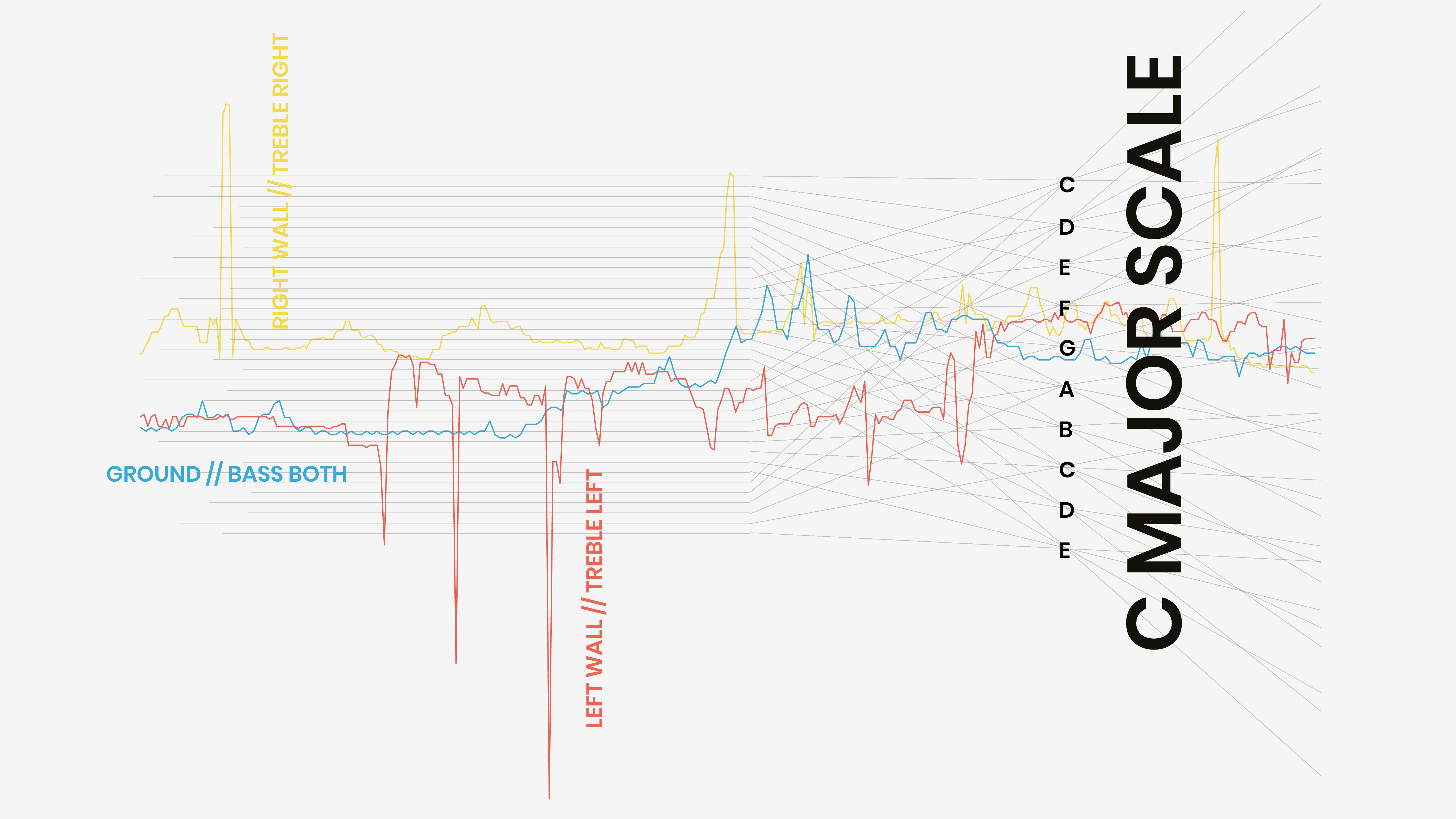
Step 1
Selecting a small number of alleys to scan, we used our device to record 3 independent sets of data in each. We collected texture data for each wall and the floor, which we could later combine.
Step 2
This data was then processed and mapped against a C Major scale. Assigning the walls to the respective ears and creating a base line using the floor texture, we were able to create soundtracks for each alley we scanned.
Step 3
We then created a ‘record’ of the city, scaling up the technique used in vinyl records and 3d printing the scanned textures so that users were able to follow the sound through touch while they listened.
Prototyping phase 2.0 was where we began to develop the technologies that allowed the user to interact with and control the data being recorded and processed. For this stage we developed front end and back end technologies simultaneously to achieve the best results in the quickest time possible, while ensuring that concept alignment was maintained.
Focused on designing and prototyping a user-controllable device, I developed a 2-axis motorized scanner that could scan texture in a similar way to the initial prototype but move now in two dimensions. The user was given complete control over the scanner’s movements using hand gestures, powered using Kinect motion capture software and Arduino.
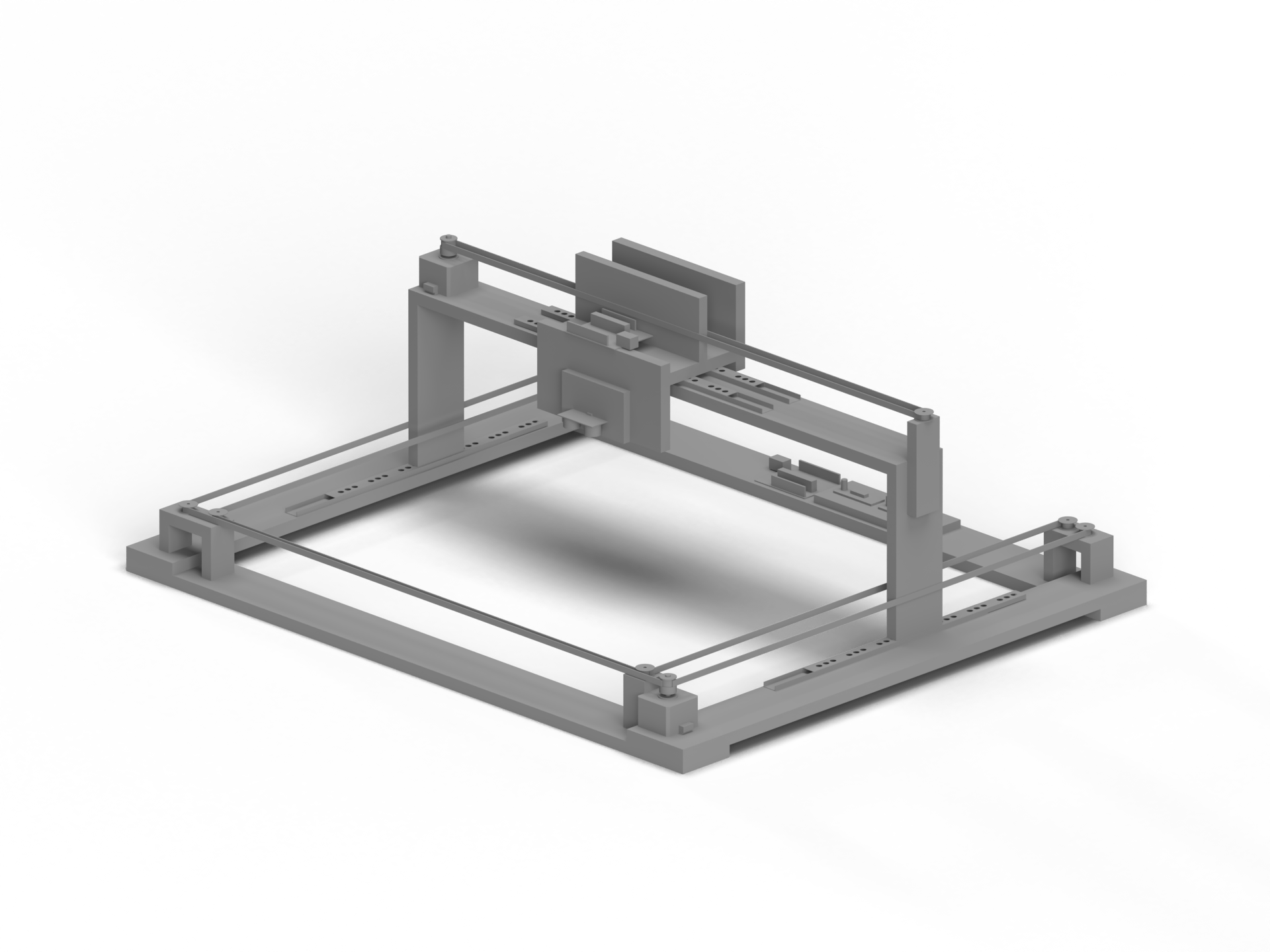
Powered by arduino
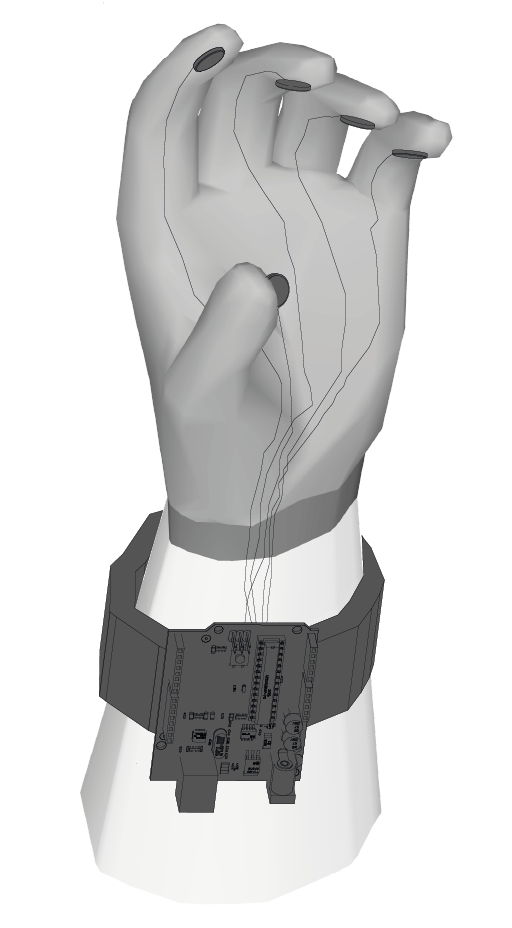
Simultaneously we began investigating the modelling of collected data within a digital environment, while developing haptic gloves to simulate the feeling of ‘touching’ something that only existed within digital space. This would allow the user to begin to ‘feel’, as well as hear, the texture that was being scanned under their control. This provided the basis for technology that could be used to scan and recreate entire buildings.
Unfortunately, we were restricted by both time and budget only allowing us to develop technology to a conceptual stage and with a relatively low resolution.

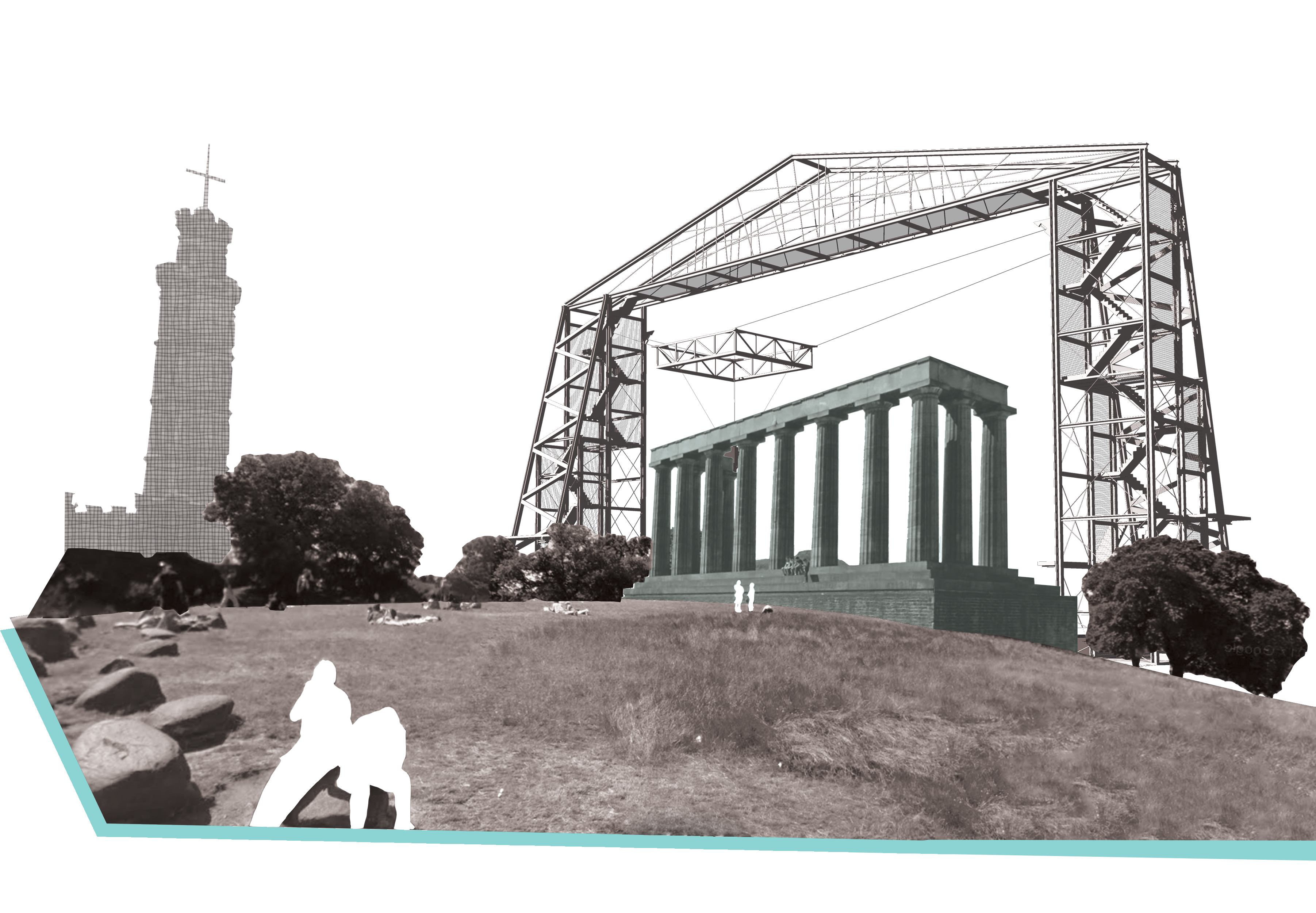
For our final design concept, we selected two sites of significant value both in architecture and the landscape of Edinburgh. The Parthenon in Greece would be our site for scanning and Calton Hill in Edinburgh would be our site for ‘reconstructing’ (where there happened to be a 1/5 finished version of the Parthenon already physically constructed).
We proposed not only the reconstruction of architecture through haptics for those suffering from blindness but also to allow for those unable to visit overseas architectural wonders to be able to experience them right here in their hometown. A way of transporting monolithic architecture through time and space.
After selecting the Parthenon, we designed a lightweight structure to support the necessary scanning device, while ensuring to have minimal impact on the existing structure.
Subsequently we designed the infrastructure required to be installed in Edinburgh for the haptic recreation of the remaining 4/5's of the Parthenon. Again, being respectful to the historically significant site, we designed a light structure that could be removed without causing damage to the original site.
For our final design concept, we selected two sites of significant value both in architecture and the landscape of Edinburgh. The Parthenon in Greece would be our site for scanning and Calton Hill in Edinburgh would be our site for ‘reconstructing’ (where there happened to be a 1/5 finished version of the Parthenon already physically constructed).
We proposed not only the reconstruction of architecture through haptics for those suffering from blindness but also to allow for those unable to visit overseas architectural wonders to be able to experience them right here in their hometown. A way of transporting monolithic architecture through time and space.
After selecting the Parthenon, we designed a lightweight structure to support the necessary scanning device, while ensuring to have minimal impact on the existing structure.

Subsequently we designed the infrastructure required to be installed in Edinburgh for the haptic recreation of the remaining 4/5's of the Parthenon. Again, being respectful to the historically significant site, we designed a light structure that could be removed without causing damage to the original site.

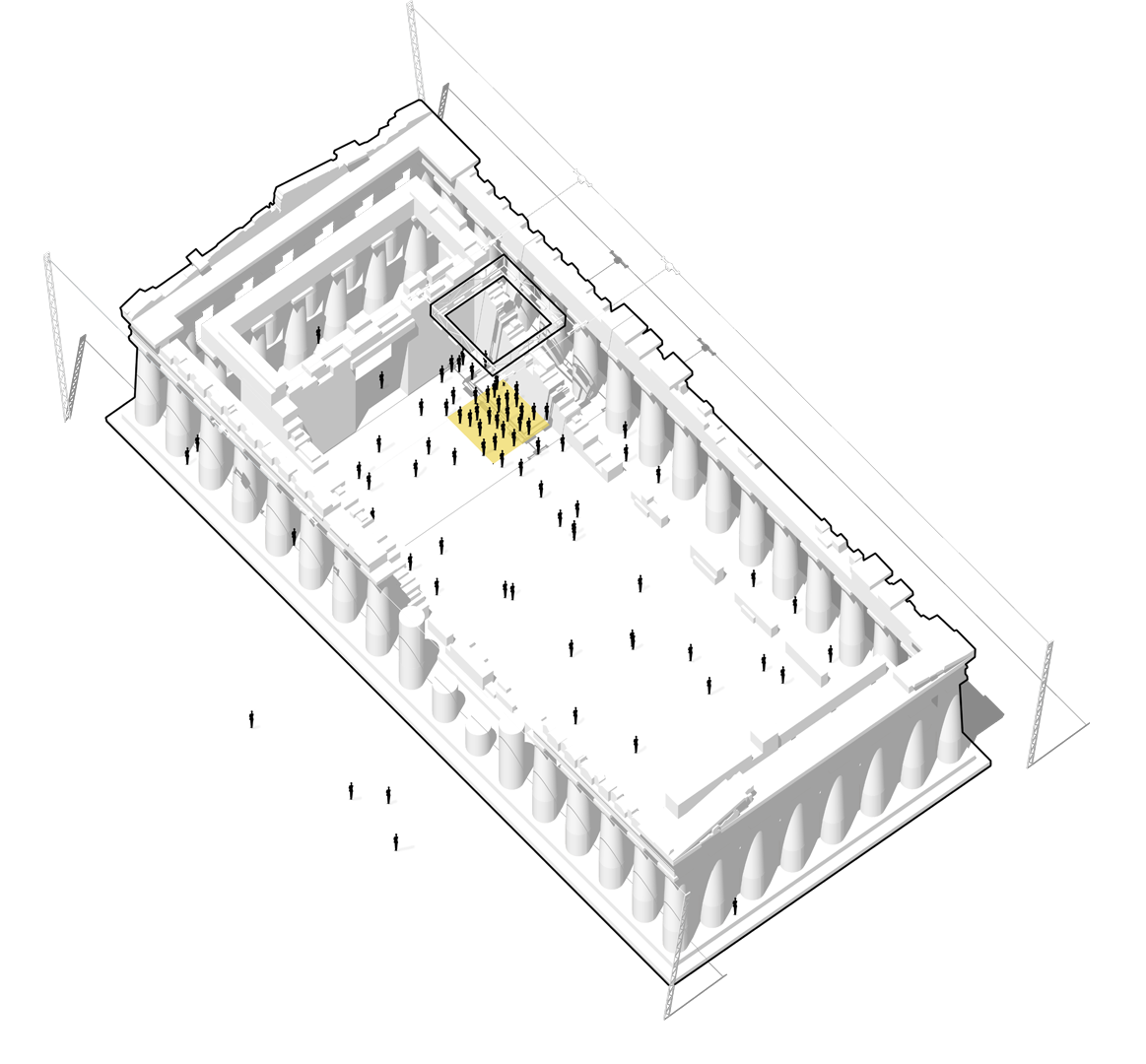
With a limited scan area of approx. 25m2, the ‘busiest’ section of the Parthenon is scanned to be reconstructed in Edinburgh. This is determined by the area in which the density of people is highest, creating a ‘link’ between the people of Athens and Edinburgh.
Using ultrasound technology, the building is scanned to create a digital copy. This is then transferred to the Edinburgh site for live re-construction.
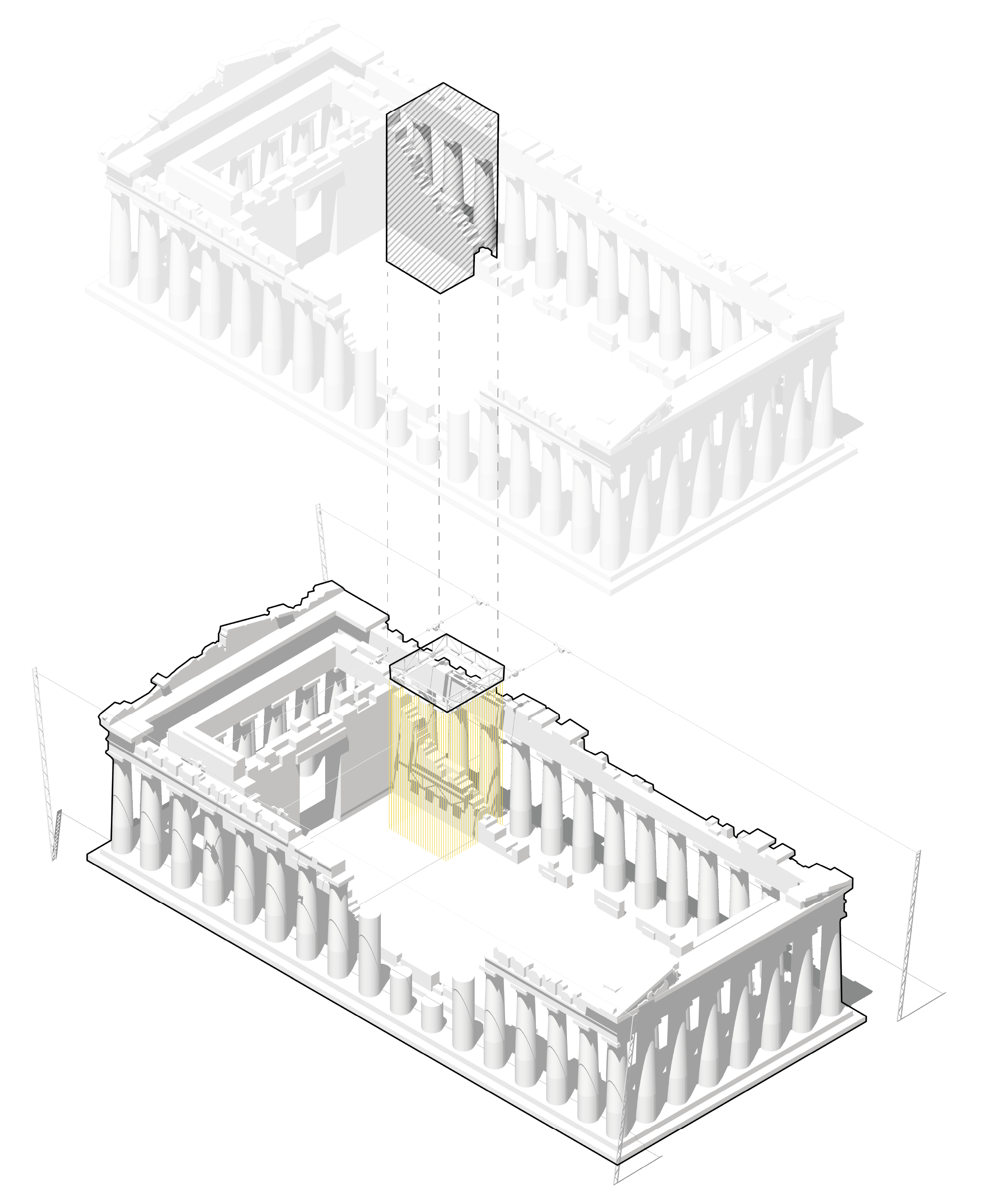
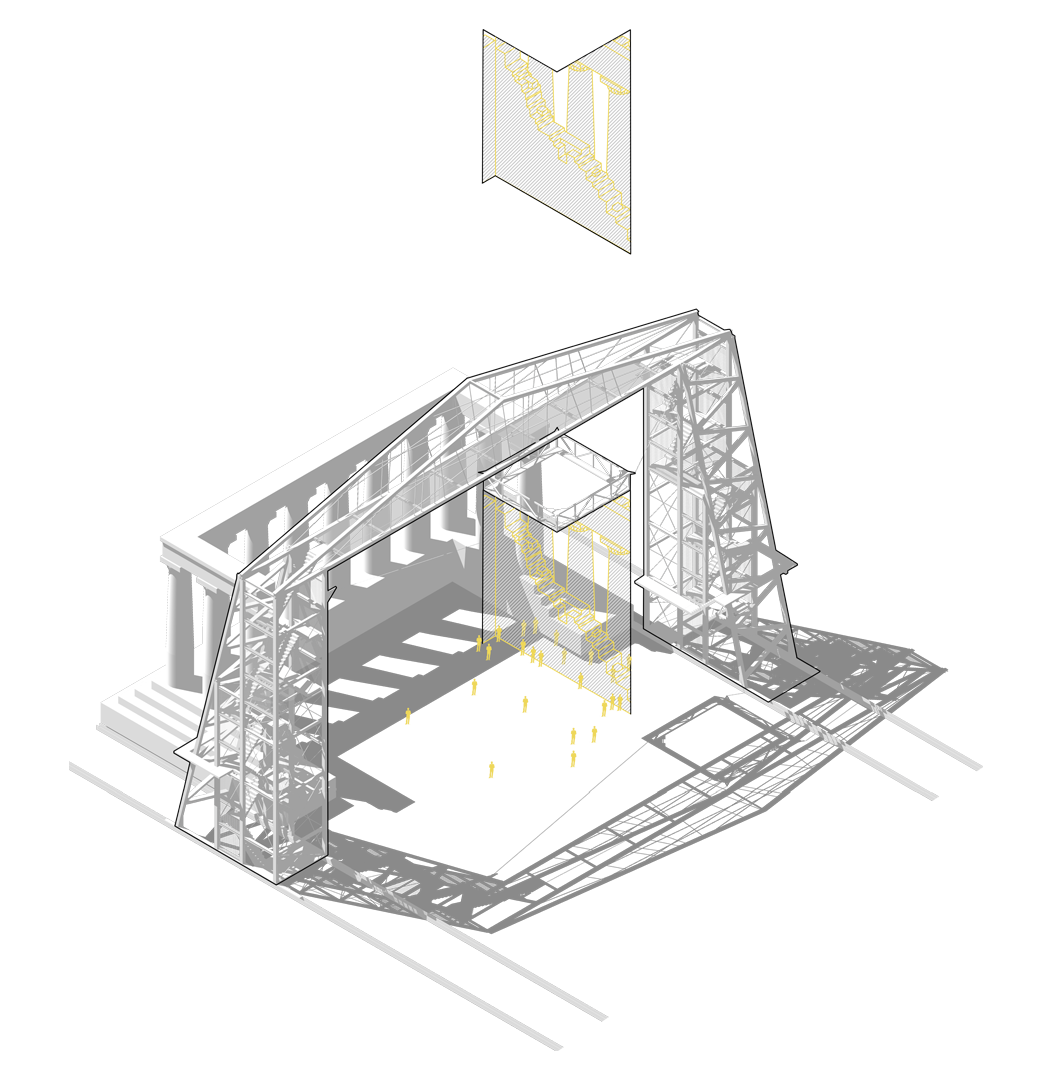
Assuming advancements in haptic technology, an exact copy of the scanned section of the Parthenon would be reconstructed in Edinburgh allowing those visiting to interact and ‘feel’ the architecture.
While our prototype involved user’s wearing gloves and being motion tracked, in reality we would want to employ more advanced technologies that create a differential in air pressure creating the sensation of touching something even though it isn’t actually there. While this technology doesn’t yet exist on the scale in which it would be required, this project assumed that this would be possible within the near future.
As a designer I always strive to find purpose for every aspect of something I design, so it was a no brainer for the infrastructure implemented in Edinburgh to also serve as a viewpoint of the city. The elevated view point would offer a unique perspective from Calton Hill.
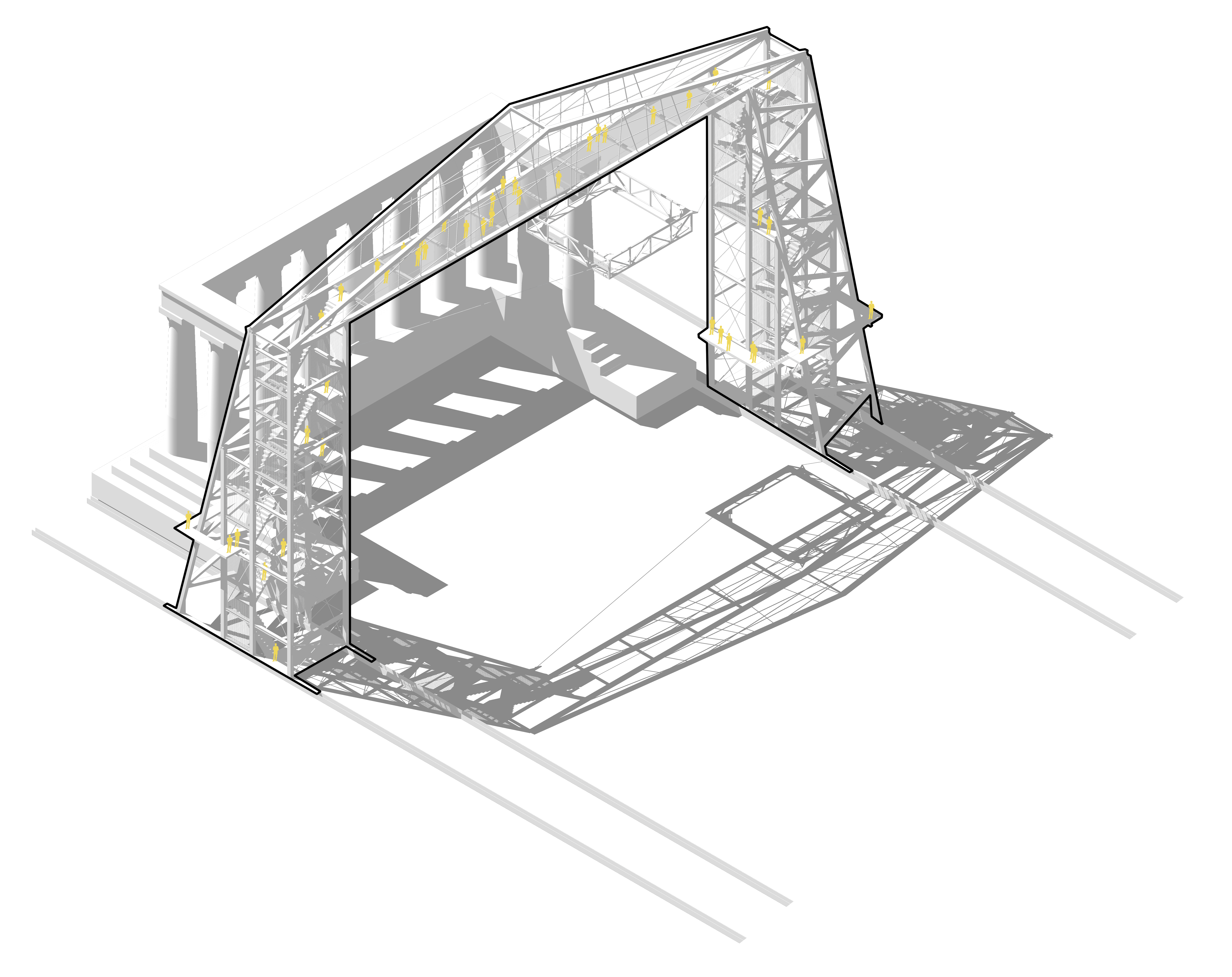
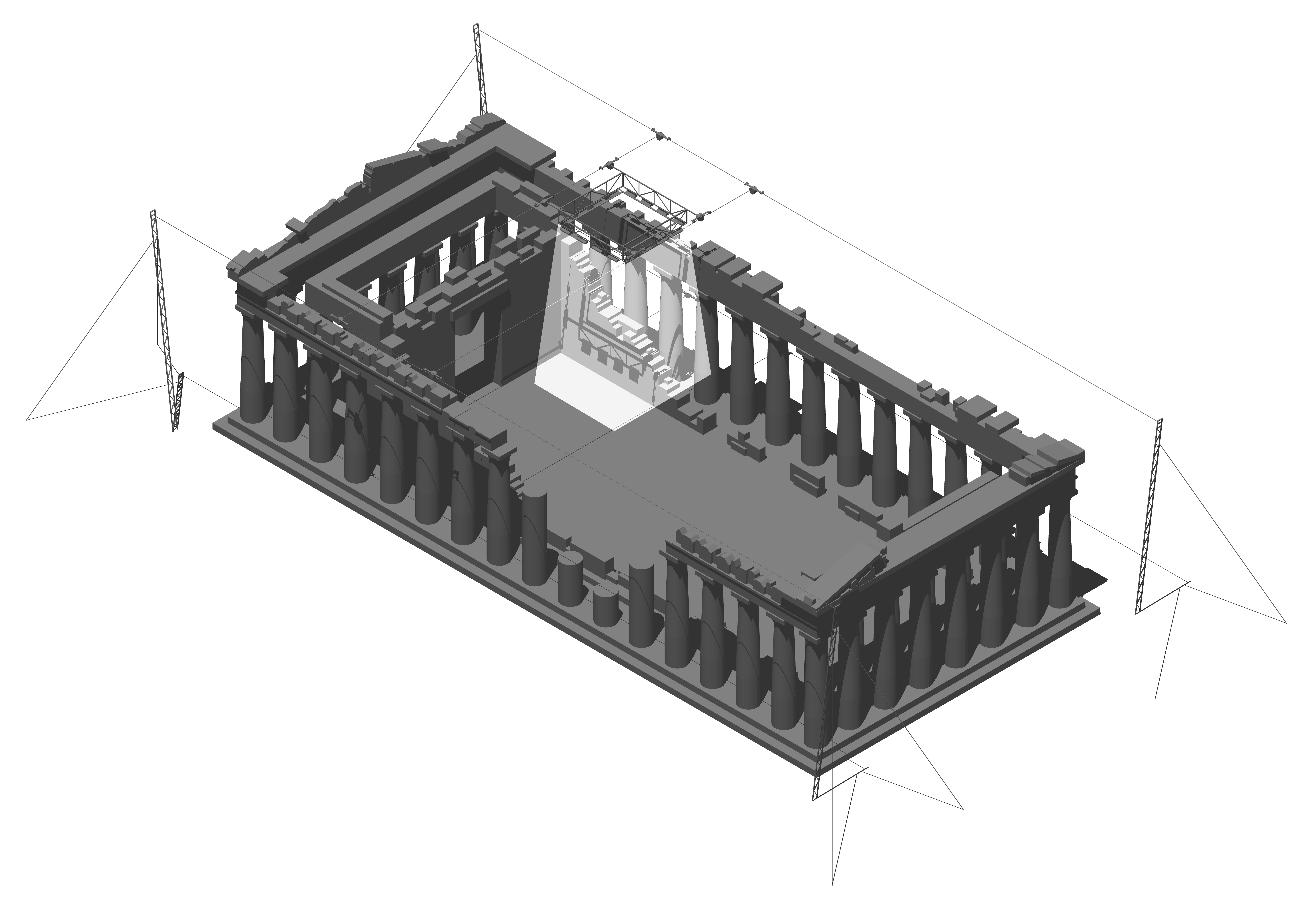
Giving back to the community of Athens, during the night the scanner would re-trace its path from that day illuminating the building as it went, helping people understand how they themselves utilize and traverse monolithic architecture.
Our final output and prototype materialized in a 1:50 scaled working building scanner prototype installed above a model of the Parthenon situated next to a 1:50 scale model of the haptic infrastructure proposed for Calton Hill in Edinburgh.
While we never achieved a fully working prototype of the entire concept, we were still able to learn huge amounts as designers from the 10-week process. We learned how to work with the technology we had available,
often a £1 ultrasound distance senor soldered together in the early hours of the morning, to build prototypes that we could use to user test concepts that could be scaled at a later date. This process also taught me the importance of iteration in the design process and having an open mind to the limitless application of technology in the human world. While not every prototype we tried to build worked first time, we would continue to iterate our design and code until we had built what we needed and set out to achieve.